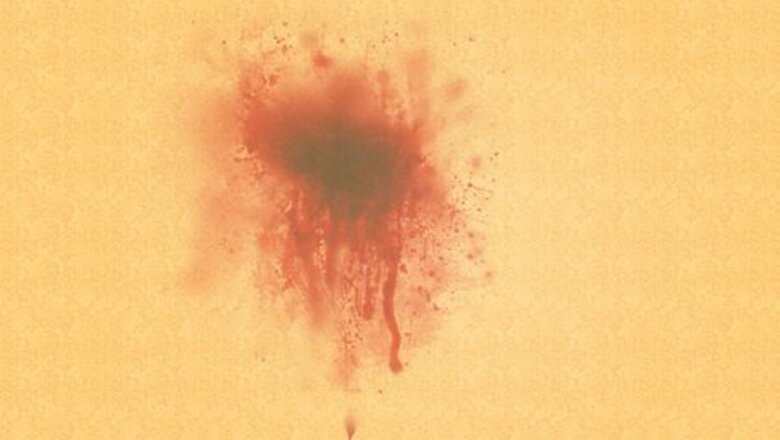
views
Cleaning Blood Off Any Surface
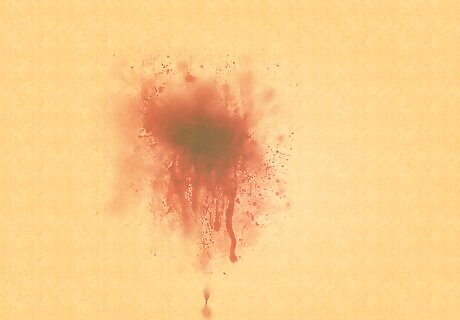
Treat blood stains as soon as possible. Blood stains will set over time and may seep into deeper layers of your wall, making them more difficult to remove. If possible, clean up a blood stain as soon as it occurs.
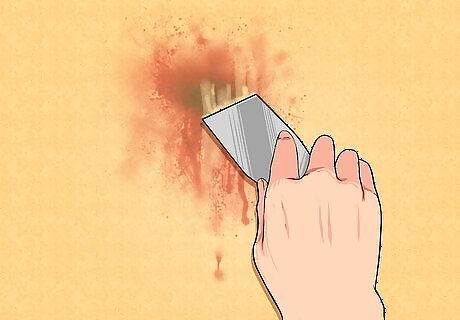
Remove as much blood as possible before starting any cleaning. If the blood is still wet, use a cloth or paper towel to soak it up. If it is dry, see if you can gently scrape it from the wall, using a plastic putty knife or similar tool. Be careful, though, not to scrape the wall surface. Wet old stains gently with water.
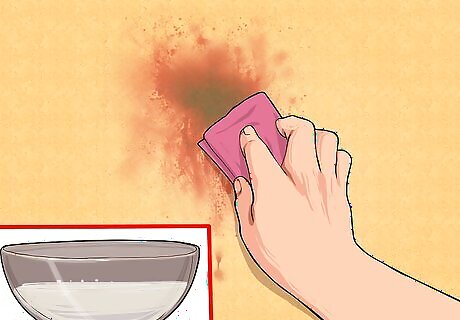
Start with the gentlest materials possible. Use soft clothes or paper towels, not abrasive sponges. Begin by trying to clean the stain with water. If that doesn’t work, move on to detergent, and then to stronger cleaners or specially-designed stain products. Use your own saliva to clean up your own blood. Test the effects of any cleaning product on an inconspicuous area before beginning to clean in earnest.
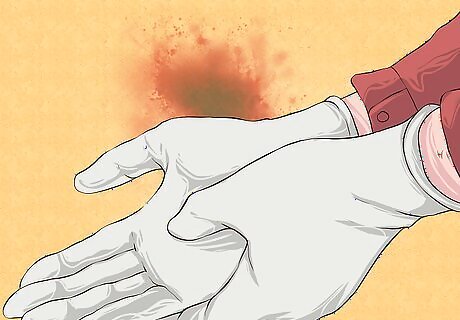
Take special precautions if the blood may contain pathogens. Wear gloves and use a disinfectant. Be especially cautious when handling blood stains or spills of unknown origin. While getting ill from cleaning a blood stain, especially an old one, is very unlikely, it’s better to be safe. Use freshly diluted bleach or a disinfectant that is registered with the Environmental Protection Agency or similar body and is labeled for use with potential blood-borne pathogens such as HIV, HBV, or HCV. If the spill occurs in a public facility, such as a school, prison, or hospital, consult and follow the facility’s procedures for cleaning up bodily fluids.
Cleaning Blood Stains Off Painted or Papered Walls
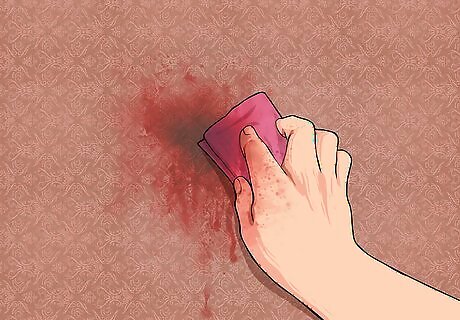
Be very gentle with wallpaper. While vinyl wallpaper holds up the best to cleaning, any wallpaper will start to separate from the wall if too much water or force is applied. Avoid cleaning over seams if possible.
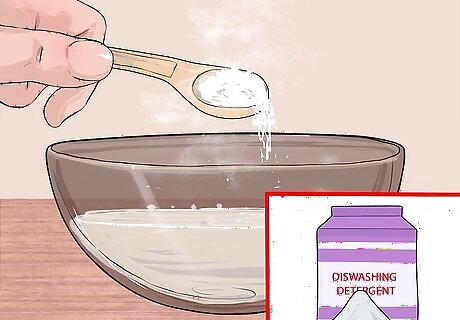
Make a mixture of one quart of lukewarm water and ½ teaspoon liquid dishwashing detergent. Add a tablespoon of ammonia to make a stronger solution.
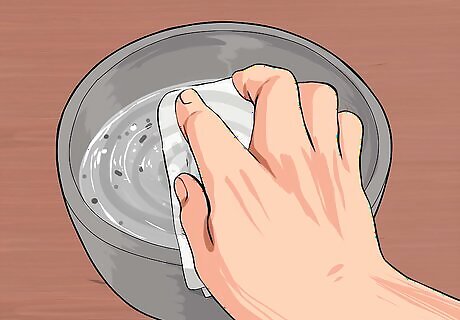
Dip a washcloth, rag or soft sponge in the soap solution. Wring out any excess water, to ensure that the cleaning cloth is not dripping wet. Then, gently rub the stain, repeating as necessary.
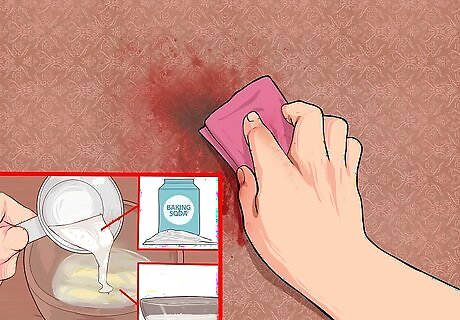
Make a paste of baking soda and water. Rub it gently over the stain. Rinse off with clean water and dry the area with a soft cloth.
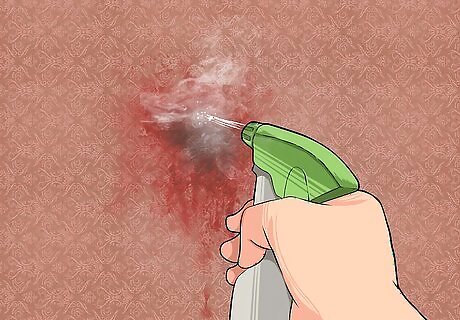
Spray hydrogen peroxide on the stain. Allow the solution to sit for a short period, being careful to wipe up any drips. Scrub very gently, then rinse with clean water.
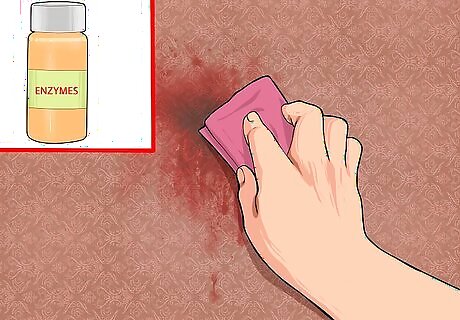
Use an enzyme product. These are products containing enzymes design to digest blood or other bodily fluids that contain protein. Follow the directions on the bottle, being extra careful to test the product’s effect on your wall surface before starting.
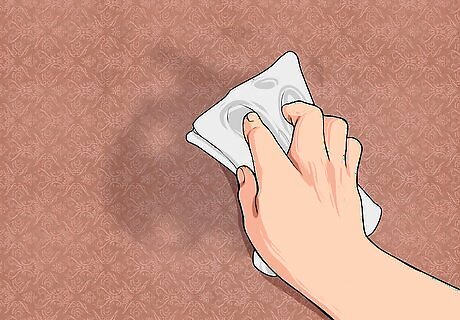
Dry the area with a dry cloth and allow it to dry completely. Be careful not to leave any cleaning solution on the wall after cleaning. Even if this attempt wasn’t successful, be sure to dry the area thoroughly to avoid damaging the paint or paper.
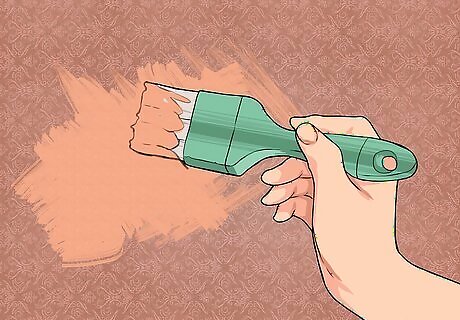
Repaint. If you can’t get a blood stain off a painted wall, you will need to repaint. If you painted recently, you can repaint just the stained area. However, if a lot of time has passed, you may need to repaint the whole wall. Be sure to use a primer first directly over the stain. Some primers are specially designed to cover stains well; read the labels to choose the best one.
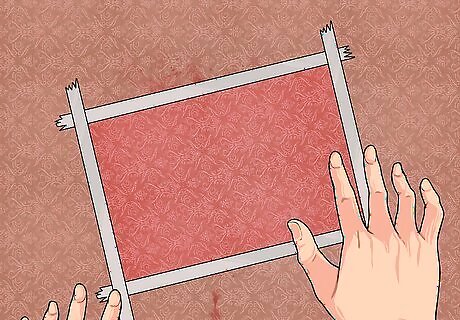
Patch stained wallpaper with a remnant or scrap. Cut a patch large enough to cover the stain and tape it over the stained area, matching the pattern as closely as possible. Use a razor knife and straight edge to cut through both layers of paper. Remove the patch, setting it aside, and carefully remove the stained paper underneath, cleaning up any backing left behind. Then insert the patch, following the directions for the type of paper and paste you are working with. Adjust the patch to align the pattern and smooth with a damp sponge.
Cleaning Blood Stains Off Tiled Walls
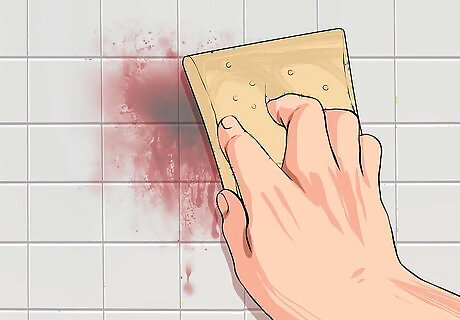
Use a non-abrasive household scouring agent. Scrub the stain using a sponge. An ordinary bathroom sponge should not be abrasive enough to scratch tile, but proceed cautiously and test in an inconspicuous spot. Rinse all of the scouring agent off with clean water when done. You may also make your own tile and grout cleaner by mixing ½ cup baking soda, 1/3 cup ammonia, ¼ cup white vinegar, and seven cups of water. Combine in a spray bottle, mix thoroughly, and spray onto the stained area. Scrub and rinse.
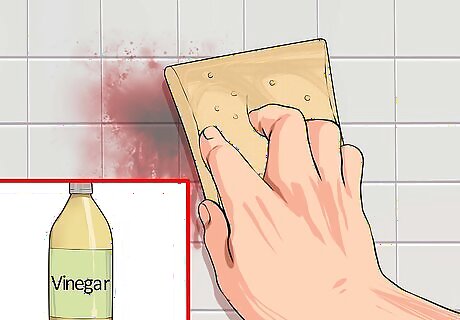
Soak hydrogen peroxide, diluted bleach, or white vinegar into stained grout. Scrub gently with a sponge. Rinse with water and be sure to soak up any excess cleaner.
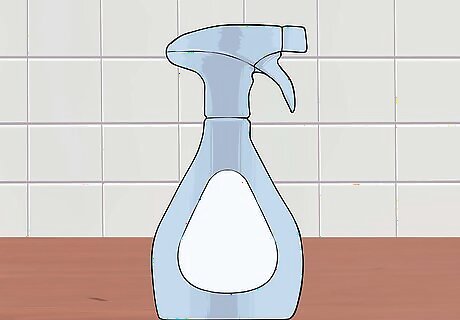
Use a commercial tile cleaner. Follow the directions on the label closely, as these products can be toxic.
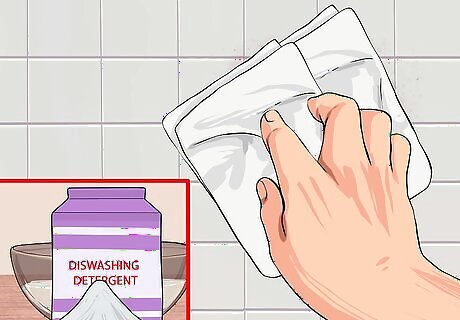
Cover the stain with a piece of paper towel. Soak the towel with liquid dishwashing detergent and a small amount of water. Allow the mixture to sit on the stain for thirty minutes, then wipe away. Rinse and dry.




















Comments
0 comment